|
These beings appeared to me last week in my Exploding Your Creativity workshop. They introduced themselves in a scene I wrote using my non-dominant hand. (We were practicing a Use Your Creative Limits exercise I love.) Then space kid and canine made their inky way onto construction paper. Now I'm a little obsessed with them. What I want to know is, who do you think they are? What's their story? Their background? Where do they come from? Where are they? What are they doing? What do they want? I have a few ideas, but I want to hear yours. Share in the comments if you like, or wherever I post on social media. I think something larger may happen with them but I don't know what yet...
0 Comments
Whatever my recent Cabin workshops Refilling Your Creative Well and Exploding Your Creativity (in progress) have been doing for participants, they've been doing a lot to shake up my creative perspective, open up new mental windows and shine light on doorways to unlock in spirit, heart, body, soul. I haven't been doing as much of the homework that I assign as the artists who signed up, but I've enjoyed taking part in our quick bursts of different kinds of making within the two-hour weekly sessions. Below are a few first-starts I made in our Week One and Two sessions of Exploding Your Creative Well and a couple of the collages from the Refilling Your Creative Well workshops (in February/March and August/September/October 2022) that serve as compasses for the direction I want my life to be pointing at this moment. Looking at these assembled in a row, I can see some of my tendencies and habits that could invite me to break out of those boxes (which will be the focus of Exploding Your Well, Week 4). There are words I'd like to cut, phrases I could revise and images I'd develop if I wanted to refine them further, but that's not the point. They're not meant to be finished products -- or products at all. Throwing together colorful messes helps me get out of my head and notice what I'm noticing, which helps when I'm gathering material for big new projects as I am now. Whether or not you identify as an artist, may you find time, energy and materials this late fall and winter to scramble up text, images and colors (and then some). May that help you look at your world in different ways and surprise yourself. In February, for the first Refilling Your Creative Well workshop at The Cabin, we created medals for ourselves, wrote the ceremony speeches and presented ourselves with our awards, as inspired by Andrew Simonet. Below is my medal and speech. This medal is for Heidi, for enduring the little things.
For sustaining at her everyday job when she wasn't always sure she wanted to be there on campus, rules changing moment to moment, frozen bike rides, students absent more often than present, in two worlds at once: Zoom and in person, coworkers going maskless, policing students on safety, getting Covid and working from home while sick, exhausted, depleted. For learning a new class, a new system, a new platform and modality every semester since spring 2020. For showing up. To the email inbox. Oh that dreadful box of doom. What will today bring? A mini-heart attack with every open. And the eye twitches! Good gawd. After six months of online classes, she didn't think either eye would stay still again. This medal is for Heidi getting students to laugh, cry, spend time with each other, offering every flexibility possible. And whenever she could, she gave herself time. To write. To be. And one Sunday every few months to do nothing at all but be human. She learned not to work or take meetings on Sundays. Learned from her panic attacks, from days she felt as much aversion going into the classroom as she did on her worst years in high school. She stopped checking email after 6pm. Started checking once a day, even -- at least the personal email. So this medal is for Heidi. For learning to love herself a little more. Learning that she needs travel, creative well being and a supportive community to sustain her. And declaring that she's gonna make smaller steps to get to those bigger goals, dammit, because each day each day each day a little something is possible a tiptoe ounce atom of forward movement can be made toward giant impossible dreams. So this medal is for Heidi. For going after joy. The Art of SubtractionThis Tuesday at The Cabin, we focused on creating through deleting. There is an abundance of creative material, talk and words out in the world today. Some people think there are too many words. Some artists think the best thing to do about this is take away, rather than add. We can create by subtracting, stripping down, erasing. However you feel about this, much of our work as artists and writers is about taking the parts of the world that matter to us and leaving out the rest. I'm a big fan of Austin Kleon -- his books, his weekly newsletters, his art. He's famous for his books on the creative process, like Steal Like An Artist, Show Your Work and Keep Going. Before that, he came out with a book of Newspaper Blackout poetry, where he finds poems embedded in New York Times articles. We all have the same alphabet and words available to us. Now we can do something with the words someone else put down. We don't have to start with a blank canvas. I've always wanted to bring this process into a Cabin workshop and did so Tuesday. We talked about Kleon's work, I showed the above and below videos and we perused models of newspaper blackout poetry examples through this website. I only wish I had stumbled upon this video tutorial in time to share with the group: Regardless, we had Sharpies, pens and fat markers ready to go. I handed out the 20+ newspapers I'd been collecting. (Thanks to my friends, neighbors and colleagues for their contributions!) We tore through them -- mostly Idaho Statesmans but one New York Times. We focused on scanning articles as Kleon talks about, instead of reading. We put boxes around words we found, loved, and wanted to keep. Then we blacked out the rest. Before Tuesday, I'd done this in one other workshop, with 3rd and 4th graders. This process was especially useful for the students who didn't like writing. (At least, those who didn't at first.) I've found the most successful poems have more words blacked out. They transform the articles, as Kleon says. They play with them as writing partners, rather than summarizing journalism. Transforming is one way to make something new, something all your own. To steal like an artist. You can consider making copies of your own work too. Then black out, erase, cut up – choosing what few words to stand out. We spent a lot of time making blackout poetry -- a good 30 minutes. Some made a few pieces. It was a bit like working on a puzzle or a collage. I found the process very calming, also, different from the cathartic feelings I can experience when I put a lot of words on a page. Almost everyone shared one of their poems. Then we took our favorite poem, or a line we liked especially, and used that as a launching point. Writing that line on paper, we then wrote something new out of those words. Some wrote new poems, some stories, reflections. When you make newspaper blackout poetry for yourself, think about what's fun about it, what you can use from this exercise in your own work, or perhaps discover that this is your new favorite way of writing. My poems from Tuesday:
danger crossing the latest dread bridge awaiting hope And one for Idaho's recent Election Day: High Court shout outside the government naked Maybe it would be good to combine these two. Enjoy blacking out words, erasing and deleting. Thank you for writing with me. XOXO, H Sight, Watching, SeeingIn May's Drop In Workshop, we focused on listening and sound. This week we focused on what we attend to with our eyes. I started by asking participants to close their eyes, paying attention to what they saw when I read this: The Summer Day by Mary Oliver Who made the world? Who made the swan, and the black bear? Who made the grasshopper? This grasshopper, I mean- the one who has flung herself out of the grass, the one who is eating sugar out of my hand, who is moving her jaws back and forth instead of up and down- who is gazing around with her enormous and complicated eyes. Now she lifts her pale forearms and thoroughly washes her face. Now she snaps her wings open, and floats away. I don't know exactly what a prayer is. I do know how to pay attention, how to fall down into the grass, how to kneel in the grass, how to be idle and blessed, how to stroll through the fields, which is what I have been doing all day. Tell me, what else should I have done? Doesn't everything die at last, and too soon? Tell me, what is it you plan to do With your one wild and precious life? Watching/Seeing Next we went outside to The Cabin's yard. I asked participants to: Find a site that draws you near. Focus on one small section of that site. One object. Sit with it for a good five minutes at least. Spend five minutes finding a place, five sitting with it, watching, paying attention. Not writing yet. After that five minutes is up, spend time drawing what you see. You don’t have to be good at drawing, just sketch what you’ve been sitting with. No judging what you draw. Get it down, not perfect. Get down what you see. Then, spend time writing down everything you see. No need to be precious – this can be a written piece like a poem/story/essay or just notes. Then go back and either write or draw some more. I’ll come around and remind you, let you know when to pick up the next thing. Again, the sequence was: Find the thing Sit with the thing Draw the thing Write the thing Draw or write When we returned inside, we paired up with a buddy and shared what we wrote and drew. Then we read this poem, and spoke to what we saw: Moon by KATHLEEN JAMIE Last night, when the moon slipped into my attic room as an oblong of light, I sensed she’d come to commiserate. It was August. She traveled with a small valise of darkness, and the first few stars returning to the northern sky, and my room, it seemed, had missed her. She pretended an interest in the bookcase while other objects stirred, as in a rock pool, with unexpected life: strings of beads in their green bowl gleamed, the paper-crowded desk; the books, too, appeared inclined to open and confess. Being sure the moon harbored some intention, I waited; watched for an age her cool gaze shift first toward a flower sketch pinned on the far wall then glide down to recline along the pinewood floor, before I’d had enough. Moon, I said, We’re both scarred now. Are they quite beyond you, the simple words of love? Say them. You are not my mother; with my mother, I waited unto death So now, dear reader, after you do all of the above, take: 1. your notes, 2. the image you drew, 3. one line or one image of a partner’s work, 4. a line or phrase from the Moon poem, 5. something you see around you right now 6. and one true thing (whatever that means to you) and write all that into a new story/poem/essay/something else. That's what we did, and turning out some beautiful material. XOXO, H Sound, Silence, ListeningIn this week's Drop-In Writing Workshop at The Cabin, we focused on listening and sound -- dissecting that sense throughout our 90 minutes together. We started by reading "The Sound of One Fork" by Minnie Bruce Pratt. The Sound of One Fork
BY MINNIE BRUCE PRATT Through the window screen I can see an angle of grey roof and the silence that spreads in the branches of the pecan tree as the sun goes down. I am waiting for a lover. I am alone in a solitude that vibrates like the cicada in hot midmorning, that waits like the lobed sassafras leaf just before its dark green turns into red, that waits like the honeybee in the mouth of the purple lobelia. While I wait, I can hear the random clink of one fork against a plate. The woman next door is eating supper alone. She is sixty, perhaps, and for many years has eaten by herself the tomatoes, the corn and okra that she grows in her backyard garden. Her small metallic sound persists, as quiet almost as the windless silence, persists like the steady random click of a redbird cracking a few more seeds before the sun gets too low. She does not hurry, she does not linger. Her younger neighbors think that she is lonely. But I know what sufficiency she may possess. I know what can be gathered from year to year, gathered from what is near to hand, as I do elderberries that bend in damp thickets by the road, gathered and preserved, jars and jars shining in rows of claret red, made at times with help, a friend or a lover, but consumed long after, long after they are gone and I sit alone at the kitchen table. And when I sit in the last heat of Sunday, afternoons on the porch steps in the acid breath of the boxwoods, I also know desolation. The week is over, the coming night will not lift. I am exhausted from making each day. My family, my children live in other states, the women I love in other towns. I would rather be here than with them in the old ways, but when all that’s left of the sunset is the red reflection underneath the clouds, when I get up and come in to fix supper, in the darkened kitchen I am often lonely for them. In the morning and the evening we are by ourselves, the woman next door and I. Still, we persist. I open the drawer to get out the silverware. She goes to her garden to pull weeds and pick the crookneck squash that turn yellow with late summer. I walk down to the pond in the morning to watch and wait for the blue heron who comes at first light to feed on minnows that swim through her shadow in the water. She stays until the day grows so bright that she cannot endure it and leaves with her hunger unsatisfied. She bows her wings and slowly lifts into flight, grey and slate blue against a paler sky. I know she will come back. I see the light create a russet curve of land on the farther bank, where the wild rice bends heavy and ripe under the first blackbirds. I know she will come back. I see the light curve in the fall and rise of her wing. Reflect Read the poem once. What do you hear? Read again. What else do you hear? What else do you notice? What else does this poem say to you? Listening/Silence John Cage talked about the other half of sound being silence. I’d like us to take some time now to listen and let silence speak to us, so that we can be ready to really notice sounds in our next step. For the next few minutes, please don’t write, read or talk, and try to keep your movement/sounds still. Set a timer for yourself for 5, 10, 15 minutes. From this quiet place, listen to your breath. Listen to your organs. Listen to the other listeners. The room. To what’s outside the room. If you can, close your eyes. Otherwise, let your focus be soft. After your timer goes off, you can take a moment to jot down what you heard. Sound Maps Next, we’ll be going outside. Bring a sheet of paper with you or a sketchbook. Grab some colored pencils or markers too. We’re going to make sound maps in the area around our residence. This can look like many different things, but mainly the process is: Go to an area outside. Wait there, listen. Draw or briefly describe what you hear in a spot on the page that symbolizes where you are. Then go to another area. Repeat until you’ve captured the sounds all around your building (or inside your building if you prefer not to go outside). Instead of a map of what you see, this is a map of what you hear. Take about 15 or 20 minutes to do this. Take your time, go slow. Write Back inside, we can incorporate the sounds into a new piece. You can do this in several different ways. Maybe you travel through the sounds as a journey, describing them. Maybe you write a story that incorporates all the sounds. Maybe a poem tried to define all the sounds. Maybe a scene blows the sounds up into giant noises a character has to overcome. Maybe you're a composer and create a new tune or song from the sounds. Maybe something completely different. Any way you’d like to incorporate the sounds writing something new is good. You can use "The Sound of One Fork" as a model or push in the opposite direction. Use your life. Use your interests. Use what you hear around you. During the workshop, I played additional music (tracks from Gnarly Buttons by composer John Adams). You can play music (preferably instrumental) and incorporate those sounds too. Write for at least 20 minutes. Share your work with someone. After we wrote for about 25, 30 minutes, we created short poems out of our longer texts and everyone had a chance to share -- some hauntingly beautiful stuff came out of that session! Thank you for writing and listening with me. Enjoy your spring! What Fuels You?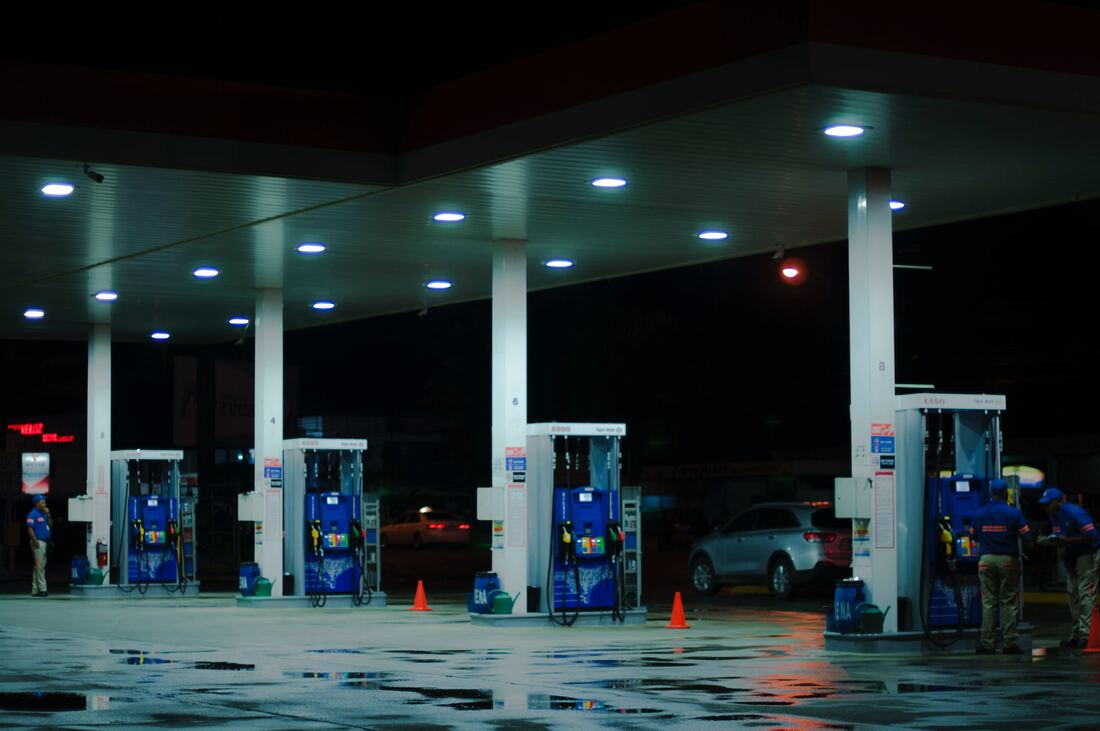 Photo by Juan Fernandez on Unsplash Photo by Juan Fernandez on Unsplash Happy New Year! At Tuesday's Drop In Writing Workshop, we wrote poems, short stories and essays based on the word “fuel” that we could revise and submit to The Cabin's Writers in the Attic anthology. Every year, Writers in the Attic is an opportunity for Idaho writers to get their work published, inspired by a theme word. This year, the word is "fuel". Learn more about Writers in the Attic (including submission guidelines) HERE. First, we wrote in list form, coming up with ideas: What is everything you think of when you hear the word “fuel”? List all the words, ideas, images, memories, dreams, characters, stories... Anything you can think of. What does “fuel” mean to you? What fuels you? What do you fuel? What is fuel? Ten ten minutes and get out all the possibilities, warming up your creative brain. Next, we brainstormed as a group. Let’s share some of the ideas you came up with. I’ll write them on the board. When I say “fuel” what comes to mind? Share ideas you came up with, but you can also build on those, add to them. Get inspired by the room’s ideas and build some more. Note – whatever you share is fair game to steal, generously*. But don’t worry – your interpretation of your idea will still be wholly yours, unique. *As in -- all artists are thieves, but we take several ideas from many heroes, put them in the blender as core ingredients and add in our own ideas, rather than lifting whole ideas from another artist. We came up with a lot of great word/idea associations with fuel as a group, like: brain chemicals the open road molecules desperation stress blood serotonin dopamine rock bottom phosphogen acrid magic combustible stinky dusty (to name a few) I like how some don't make literal or cognitive sense to me right away. Now, how do we turn these ideas into something bigger? Let’s look at other writers’ use of the word “fuel”. We’ll stick with poetry, because it’s easier to get variety with short poems. But you can write a short story, persona essay or something else. Third Poem for the Catastrophe BY JOYELLE MCSWEENEY O melting rainbow that embrace this roof O persistent covenant hangs around giving us nothing, leaves its muck in the water expects us to be knocked out by its fine colors weren’t you nothing too, weren’t you sea bottom crunched down into fuel and when that eggshell roof busts through mama’s gonna buy you a rainbow ride for free an illumination, an inflammation hyperion flame headdress dream pins in the fuel balloons of Koolaid burst down to cool the sticky baby’s head plus a credit card a glock a new bible a princess dress a mermaid princess dress so you’ll be twice submerged or an erased Indian princess pajama set now go to sleep Allegiances BY EMILY BERRY In the nighttime house I don’t know where you are My allegiances could change How can I stop my allegiances from changing? Morning is a gown put on at midnight, but no one’s coming I don’t know what your secrets are You say you have no secrets but I can feel them, they’re bumps under the blanket You do not let me in This mood kept me up all night, like stars in my face, like the burning fuel of dead stars burning right through my face So now I have my own secrets This voyage at nighttime, these burning holes I can’t take you with me — I don’t know who you are You say it’s me, but I’m dreaming, I can’t recognize anything except someone else’s song, which sounds like a kind of siren, it’s calling me, it puts a light on Give me three reasons Oh, you think I test you? You think I work you too hard? You think it’s too much to make you master the task on your blue-black knees at 3 am? Body Builder BY CATHY PARK HONG I can no longer blush. Half-face towards the starchy scape. Birds limn the spindle trees, their Listerine-hued eyes dart as they trill mechanical dirges tabulating not again, not again / I can no longer blush. The flat arctic sky boundlessly jogs to another hemisphere / She grows! Or her pectoral grows or all her pectorals grow / A drop of body oil the size of a water balloon splooshes down on a man as a graceless anointing, atomizing into tears / How delicate the sounds are from her height! Glottal roses wink out of their throats: their voices tine/ Now I am blushing / Swamp moss draped over the arcades / Oh she’ll topple. She’s making for the welkin / swamps massage the plywood foundations of our houses / And speaking of / she shoots up not like a beanstalk but a city erected quick-time / and speaking of, I blush blood / Roiling up past 200 ft, dizzy from all that phosphagen / I be damned where she gits all that nylon, the size of wedding tents!/ She flexes for her audience / Naugahide. Fuel injection. A sawed-off shotgun will do you nothing just the rat-a-tat-tat / Rabelaisian bullhonkies hunker and tinker tents around her / Roiling, flexing / are louts without a law to bless them / a shadow overcast / a footstep is a swamp in which gators pop up like whack- a-mole carnival games / what are they saying? do they marvel?/ I am hemorrhaging flames! / she aims with her thumb. After reading these poems aloud, we talked about how they use the word fuel And how we might use these poets tactics in what we write. How many ways do these poets use the word fuel? A nd also... What is surprising or interesting about each? What are the tools, pairings, images, structure they use? What would you want to steal, generously? What would you want to do differently? Next, we wrote: A story, essay, poem, or multiple poems using the word “fuel” Use your ideas from your first listing. Expand on them. Add in other ideas, images, from the group brainstorm, and other resources. Use images and inspiration from the poems, even if you’re writing fiction/nonfiction. You can title something using “fuel” and then the body springs from there. You can use the word in the text as a metaphor, an image, dialogue. The whole piece could be about fuel. You decide. Write, walk away, come back to it. After you write a draft, come back and revise it. We wrote for 25 minutes. You can write for as long as you like. Do this with a friend, share your work and offer feedback! Invite others to share what resonates about each share. And one thing the writer could work on before submitting. How did that go? Submission deadline for Idaho Poets is February 4 at noon. Happy writing and good luck! Consider Everything an ExperimentOn Tuesday I met with writers at The Cabin's Free Drop-In Writing Workshop, where we explored ideas, processes and words by Sister Corita Kent and Marie Howe, using them to experiment with our intention, focus and questions in creating something we need to make right now. Read We started by reading Some Rules for Students and Teachers, which is often accredited to Merce Cunningham and John Cage, but was originally developed by the nun and artist Sister Corita Kent, who used art and teaching as a way to make the world better. Discuss It's the start of the fall school semester for a lot of us. These rules help me think about how we can be life-long teachers and students. And how writing is a way of being a perpetual teacher student. Is there a rule here that reverberates especially with you today? As an artist and writer in general? What speaks to you about these rules? Right now we'll focus on some of my favorites: “Consider everything an experiment.” “Don’t try to create and analyze at the same time.” And: “Save everything.” Finders Corita Kent had her art students cut out "finders": Tiny frames Or lenses Boxes Out of pieces of cardboard. "Kent encouraged all of her students to carry a 'finder,' or a piece of cardboard with a rectangular hole cut into it. The inexpensive tool, which can be made by anyone with cheap and accessible materials, acts like a lens to home in on specific facets of a given environment. 'You can then view life without being distracted by content,' the book explains. 'You can make visual decisions—in fact, they are made for you.'" --Alexxa Gotthardt 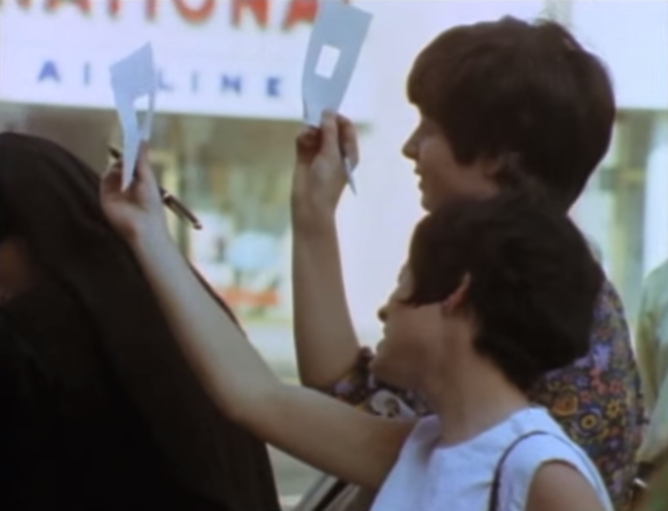 Finders from Learning By Heart, by Corita Kent. Image from Austin Kleon's tumblr. Finders from Learning By Heart, by Corita Kent. Image from Austin Kleon's tumblr. Experiment
Take a sheet of paper (or cardboard), fold it in half, and cut a small box in it. Smaller than your eye or than a glasses lens is good But you can experiment with the size of your box too. Go outside. Spend 10 minutes looking through your little box at the world Or spend 20 minutes, an hour, whatever you want/have. Look through your box inside as well as outside. Look close up, far away. Don’t so much look FOR something as let the world impact your seeing And let the frame impact your way of seeing. Write Write down everything you saw. Let yourself be surprised by what you remember, what you write, how you write it. What you saw, how you saw. Let it go from there too – how that seeing impacted your body/mind/heart, What you felt, observed from other senses, What it made you remember and discover and wonder about… No censoring yourself, no editing, no analyzing... Let the observations guide what you write. Write for ten, fifteen, twenty minutes. Read SINGULARITY by Marie Howe (after Stephen Hawking) Do you sometimes want to wake up to the singularity we once were? so compact nobody needed a bed, or food or money — nobody hiding in the school bathroom or home alone pulling open the drawer where the pills are kept. For every atom belonging to me as good Belongs to you. Remember? There was no Nature. No them. No tests to determine if the elephant grieves her calf or if the coral reef feels pain. Trashed oceans don’t speak English or Farsi or French; would that we could wake up to what we were --when we were ocean and before that to when sky was earth, and animal was energy, and rock was liquid and stars were space and space was not at all — nothing before we came to believe humans were so important before this awful loneliness. Can molecules recall it? what once was? before anything happened? No I, no We, no one. No was No verb no noun only a tiny tiny dot brimming with is is is is is All everything home Discuss What do you see here? What do you notice? What hits you? Read again. Read it out loud. Consider what you saw in the finder frame as you were looking. Consider what you wrote and what you saw as you read. What does this rereading cause you to think about what you saw? Notice how questions guide this poem, how the images come from big questions. Write Consider one of the rules of Sister Corita Kent. Use that as an intention as you write your next thing. Consider your questions for the world. Big questions. What do you want to ask the world? Consider the images you framed in your walk. Bring all of these together As you write a poem, a story, a reflection, an unnamed ungenre-ed thing. Allow yourself to break all the rules And write/create the thing you most need to make right now. Use everything. Save everything. Write for fifteen, twenty minutes, more... And maybe at the end, find a few phrases that stand out especially, Maybe these become the tiny framed image, the molecule, the haiku Of everything else you wrote. Share what you wrote with someone. Thanks for writing and exploring with me. Contact me if you have questions, thoughts, ideas. Share your writing with me if you want! Memory: No Metaphor/MetaphorOn Tuesday I met with writers at The Cabin's Free Drop-In Writing Workshop, writing a memory in different ways to discover two, three, 20 ways of seeing the same moment.
Read We started by reading from The Curious Incident of the Dog in the Nighttime, which was part of my fun summer reading this season. From The Curious Incident of the Dog in the Nighttime by Mark Haddon 29. I find people confusing. This is for two main reasons. The first main reason is that people do a lot of talking without using any words. Siobhan says that if you raise one eyebrow it can mean lots of different things. It can mean “I want to do sex with you” and it can also mean “I think that what you just said was very stupid.” Siobhan also says that if you close your mouth and breathe out loudly through your nose, it can mean that you are relaxed, or that you are bored, or that you are angry, and it all depends on how much air comes out of your nose and how fast and what shape your mouth is when you do it and how you are sitting and what you said just before and hundreds of other things which are too complicated to work out in a few seconds. The second main reason is that people often talk using metaphors. These are examples of metaphors I laughed my socks off. He was the apple of her eye. They had a skeleton in the cupboard. We had a real pig of a day. The dog was stone dead. The word metaphor means carrying something from one place to another, and it comes from the Greek words μετα (which means from one place to another) and φερειν (which means to carry), and it is when you describe something by using a word for something that it isn’t. This means that the word metaphor is a metaphor. I think it should be called a lie because a pig is not like a day and people do not have skeletons in their cupboards. And when I try and make a picture of the phrase in my head it just confuses me because imagining an apple in someone’s eye doesn’t have anything to do with liking someone a lot and it makes you forget what the person was talking about. My name is a metaphor. It means carrying Christ and it comes from the Greek words χριστος (which means Jesus Christ) and φερειν and it was the name given to St. Christopher because he carried Jesus Christ across a river. This makes you wonder what he was called before he carried Christ across the river. But he wasn’t called anything because this is an apocryphal story, which means that it is a lie, too. Mother used to say that it meant Christopher was a nice name because it was a story about being kind and helpful, but I do not want my name to mean a story about being kind and helpful. I want my name to mean me. What do you think about Christopher's idea of metaphors? That it’s a form of lying. Is it? To you? I'm not sure I agree, but it's an enjoyable perspective. I love hearing about metaphors from a neurodiverse perspective. Is a metaphor a lie that tells the truth? What else do you notice and pull from this short chapter? Visualization Take a moment to find yourself in a memory. This doesn't have to be the first that comes to mind. Maybe it’s the third, maybe it’s buried. Make it a strong memory. One that brings an emotional response. Might be a favorite, might be a very difficult moment. Might be a long time ago, might be very recent. You can close your eyes and put yourself there. See all around in this memory. Notice everything you hear and feel and smell and taste. Look forward, backward, up, down. Pay attention to everyone there, every moment, walk yourself through this time. Write Once you have this moment fully in you, write about it in a way that Christopher might approve. Use no metaphors. A simile might be okay, but try avoiding figurative language. As much as possible. Metaphors, personification, hyperbole, idioms. Try instead for very specific detail. Sensory detail. Exactitude. Don’t leave anything out. You can include emotions, but be sure to capture every moment. Every moment and everything you can see, hear, taste, feel, smell. A moment-by-moment, accurate, even objective view of everything. Write for 20 minutes. Write, Reverse Great. Now let’s try for the opposite. Take that same memory and write about it completely in metaphors. Line by line. The entire thing might be a metaphor, or maybe you try for one after the other. A list of metaphors. There can be other kinds of figurative language too. The whole thing might be a giant fabrication, exaggeration. You might create the myth or fairy tale version of your memory. Or an apocryphal story. Don’t be afraid to offend and confuse Christopher completely. Write for 20 minutes, or as long as you can. Which version do you prefer? Why? Did you prefer the process of writing one version? Do you enjoy what came out of that same writing or the other version more? Third Time: Now, write a version that blends the two, in a dealer’s choice way. Write a new memory that’s mostly metaphor but a bit of exact detail. Or one that is full of exact detail with a few bits of figurative language thrown in. Two truths and a lie? Two lies and a truth? Or take parts of what you’ve written already and combine into something new. A blended poem or a very short bit of prose or fairy tale, based in truth. You can use the same memory or a new one. When you read back over what's been written, or share it with a friend, What do you hear in what you wrote? What is meaningful? What resonates? What is useful in this process? What can you discover in seeing the same memory in multiple ways? Thank you for writing with me! Heads up: the first play of the Boise Contemporary Theater Season is The Curious Incident of the Dog in the Nighttime, based on Mark Haddon's great book. This past Tuesday at The Cabin's Free First Tuesday Drop In Writing Workshop, we built our dream worlds, creating new worlds using our biggest-heart-melting desires, metaphor and animal instincts. We started by reading an excerpt from one of Tina Rowley's fun and fierce weekly newsletters: Weekly Zephyr #42: The Feast of Anna Perenna, March 15th, 2018. Click on archived Zephyr link to read #42 and subscribe to her lovely newsletters! Using Tina Rowley’s prompts, we started designing a world:
Your ideal planet. Some of you may have done this for fiction projects. Here, create the world you would want to live in right now. If you could change the world, what kind of world would you make? Design your new planet or region or place. A world. You pick the parameters. You pick everything. The shape of the world, even. Name that shape. And: Who lives there, What it looks like (and use all the senses to describe) What are all the people like (use very specific traits) What are the natural laws/weird rules? What’s the government? Is there one? What kind? (Use Stephen Chrisomalis' extensive list linked from Rowley's letter!) What makes this place so slammin’? Start with lists of details. Try not to leave anything out. We wrote for about twenty minutes. Then we read and discussed Rebecca Solnit's excerpt from Book of Migrations: From Book of Migrations by Rebecca Solnit It’s no coincidence that the books and posters we use to learn the alphabet from are most often animal alphabets, from aardvark to zebra, for animals constitute the primordial alphabet. I grew up with a Dr. Seuss book called On Beyond Zebra, which coined new letters for the alphabet and fabulous beasts to go with them, as though you couldn’t have innovation in one area without the other, a proposition that made perfect sense to children. Medieval Irish manuscripts are notable for their animal ornamentation around the capital letters, as though the alphabet were turning back into beasts. Like alphabets, animals constitute a finite group that can describe the whole spectrum of possibility; animals are themselves a language for describing both the bodily forms and range of dispositions of human beings. In the Middle Ages, bestiaries were a popular form of literature, occupying a niche somewhere between field guides, fairy tales, and alphabet primers. The bestiaries, and the animals they described, were part of a system in which everything had an allegorical meaning; the whole world has a text waiting to be read by those who knew its language. Elephants, for example, signify Adam and Eve in Eden, because they are supposed to conceive their young innocently, by sharing the fruit of a certain tree; they also signify the Hebrew law, because when they fall they cannot get up again. Wild goats, because they constantly seek higher pastures, signify good preachers. The Bible and the world were two equal forms of the divine text, so that animals were almost literally an alphabet, rather as they were for Aesop, who made them illustrate so many aspects of human character and conduct, with his dogs in the manger, his virtuous ants and sybaritic grasshoppers. In either version, animals make the human world clearer, give tools and emblems with which to describe and understand it. Even as recently as George Orwell’s Animal Farm, animals served as emblems of human tendencies, so that the horses in his allegory were honest workers, the pigs corrupt conspirators. The majority of figures of speech that make the abstract concrete and imaginable are drawn from animals, human bodies, and spaces, from the wolf at the door to the arms of chairs and shoulders of roads to the excavation of buried memories. It’s the animal world that makes being human—catty, dogged, sheepish—imaginable, and the spatial realm that makes action and achievement—career plateaus, rough spots, marshy areas—describable. Sometimes it mixes: along the Cork-Kerry coast are the jutting formations Lamb’s Head, Hog’s Head, Cod’s Head, Crow Head, and Sheep’s Head. But most of the discussion about nature and the environment emphasizes a purely physical or spiritual need for it, not its imaginative role. Not long ago, I noticed an art magazine misspelling the bridle reins of the phrase on a tight rein as reign, because although they understood royalty, they had no clue about horses and their harnesses—so even the world of domestic animals was lost to them as a way of describing the human and the phrase was becoming meaningless on its way to becoming extinct. (More recently, I found myself going to ride a horse with a few carrots and a stick as aids, and the phrase became resonantly literal again.) I wonder if generations of being without contact with such spaces and beings will eventually strip down English into a kind of newspeak. After all, how many people now know how a mule kicks, or have seen bees make beelines? And when speech goes blank, imagination will have preceded it. The Natural History Museum is a museum of language, symbol, metaphor, and imagination, of the creatures that once inhabited our lives and our now fading even from our speech. The complete development of the world as a human-only zone—the paving over and flattening of the landscape and the elimination of all creatures but food animals sequestered in factory production sites—threatens to take away not only the imaginative solace of a world beyond us, but the very language of the mind. Metaphor is a Greek word that literally means to transport something from one place to another; and in Athens the public transit system is called the Metaphor. There one can literally take the Metaphor to work, or take the last Metaphor home, though in the rest of the world metaphors serve only as a medium of imaginative travel. They are, in fact, the transportation system of the mind, the way we make connections between disparate things, and because the connections are intuitive and aesthetic, they are the essence of the ways in which we think that machines cannot. Metaphors navigate the way things span both difference and similarity; they describe a world of both dizzying variety and intricate relationships. Without metaphor the world will seem threateningly amorphous, both boringly identical with ourselves and utterly incomprehensible. Animals, with their inherent resemblances and differences, are where metaphor begins. The essayist John Berger writes, “The first subject matter for painting was animal. Probably the first paint was blood. Prior to that, it is not unreasonable to suppose that the first metaphor was animal. Rousseau, in his Essay on the Origin of Languages, maintained that language itself began with metaphor: ‘As emotions were the first motives which induced man to speak, his first utterances were tropes (metaphors). Figurative language was the first language to be born, proper meanings were the last to be found.’ If the first metaphor was animal, it was because the essential relationship between man and animal was metaphoric…What distinguished man from animals was the human capacity for symbolic thought, the capacity which was inseparable from the development of language in which words were not mere signals, but signifiers of something other than themselves. Yet the first symbols were animals. What distinguished men from animals was born of their relationship with them.” Language is humankind’s principal creation, a pale shadow of Creation, and one that needs to come back again and again to the nonhuman world to renew itself, to draw strength and color. It requires contact with the natural worlds of the landscape, the body and the animal kingdom to connect its creations to Creation, and makes contact by metaphor. We talked metaphors, animals, driving metaphor trucks through our worlds… Consider the place you just created. Is it a metaphor for something? Is there a metaphor you can insert into this place? If you were driving a metaphor truck there, what would that be? Do certain animals live there? Certain human bodies, spaces, that can be animals? And we wrote scenes or poems or stories or essays or memoirs located in the worlds we created. As you write your ( ) in your brand new world, consider metaphor. As though you are driving a metaphor truck through your new world. Dig hard into this metaphor – the deeper you explore, the more real it will seem. Consider the animals. Consider everything. Create your utopia. Share through all your details and metaphors why this place is so important. And why we should all live there, go there, create this place. We wrote for almost twenty minutes. But you can write as long as you like. Then share it with someone. Thank you for writing with me! |
Like what I'm posting? You can leave me a tip!
$1, $10, $100, whatevs :) Heidi KraayProcess notes on a work in progress (me). This mostly contains raw rough content pulled out of practice notebooks. Occasional posts also invite you into the way I work, with intermittent notes on the hows and whys on the whats I make. Less often you may also find prompts and processes I've brought to workshops, as well as surveys that help me gather material for projects. Similar earlier posts from years ago can be found on: Archives
April 2024
Categories
|
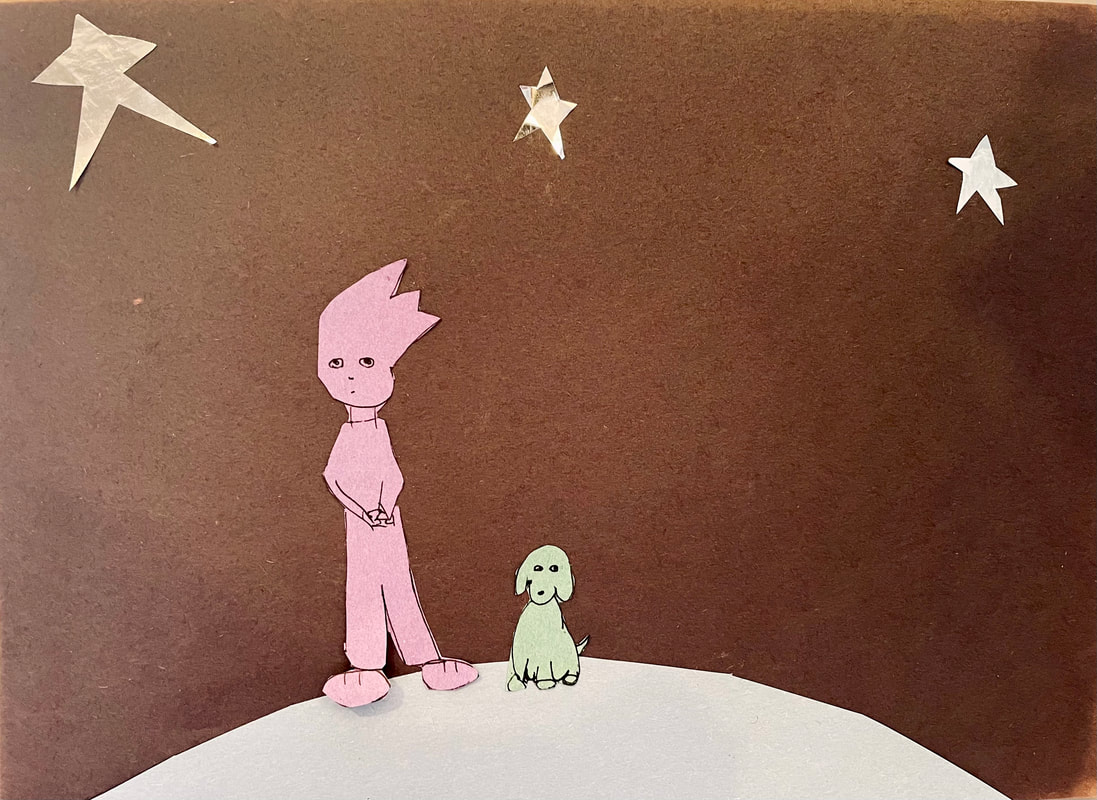
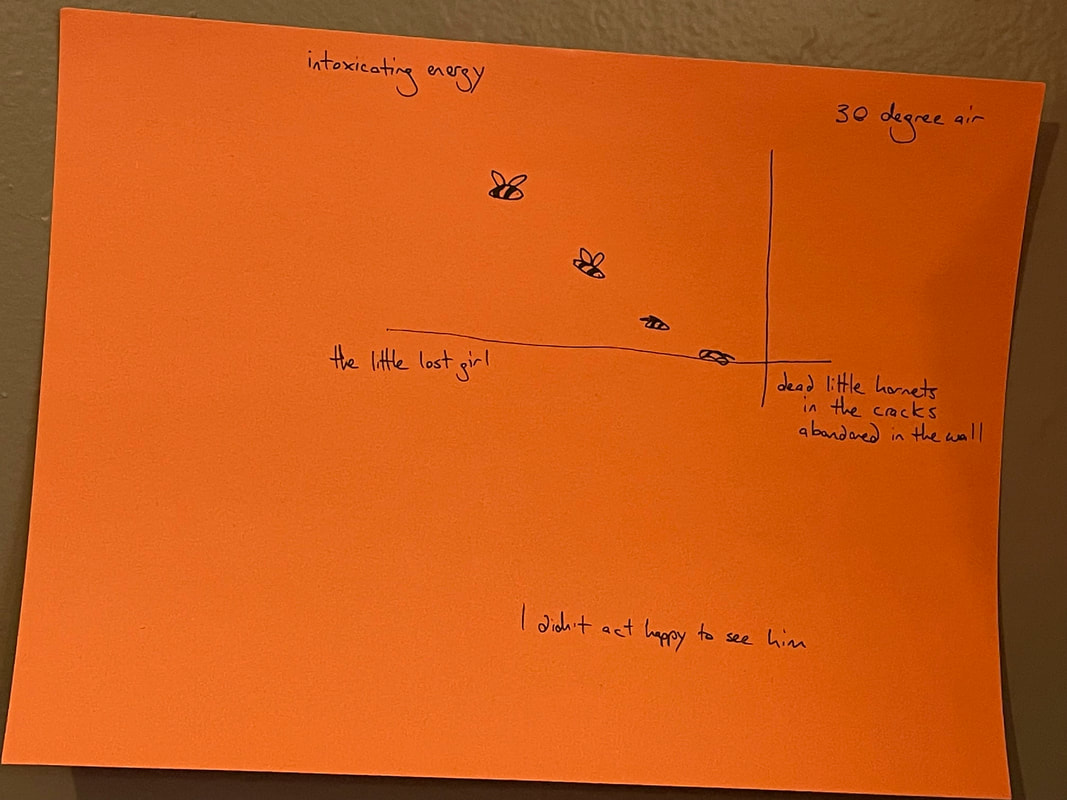
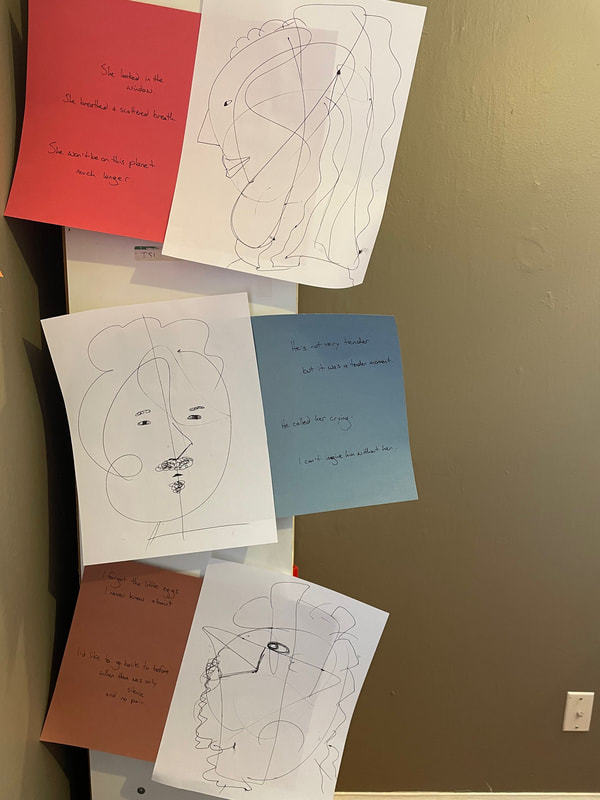
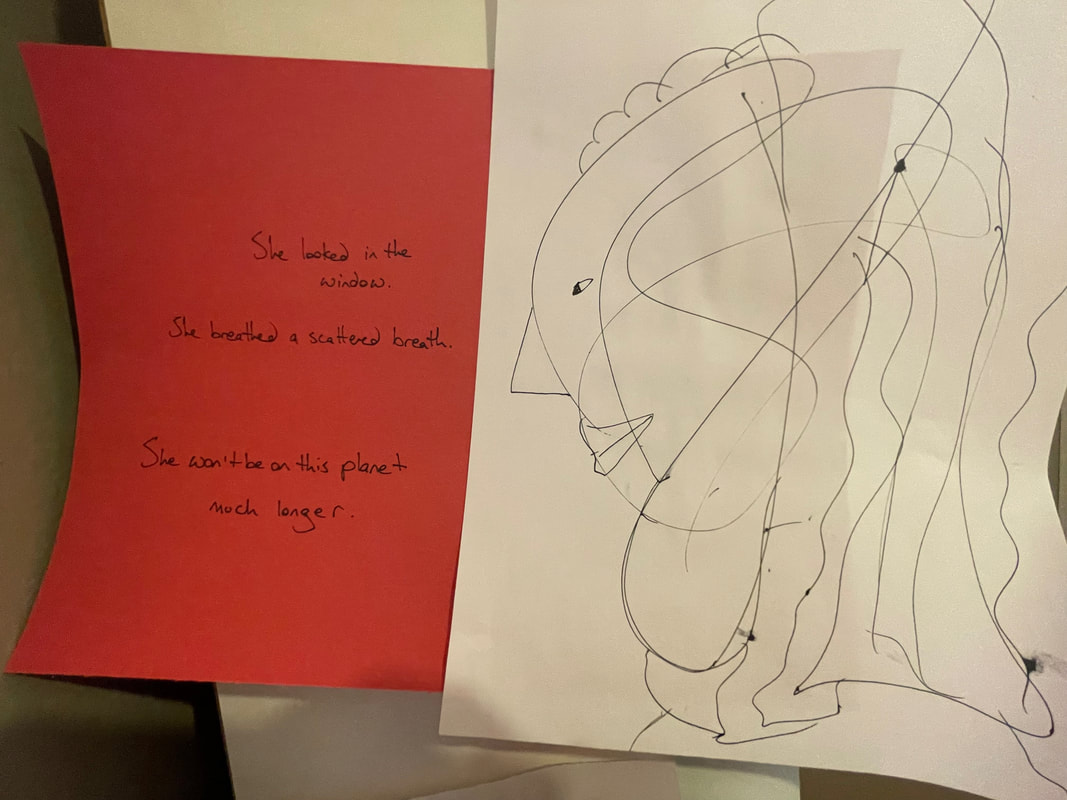
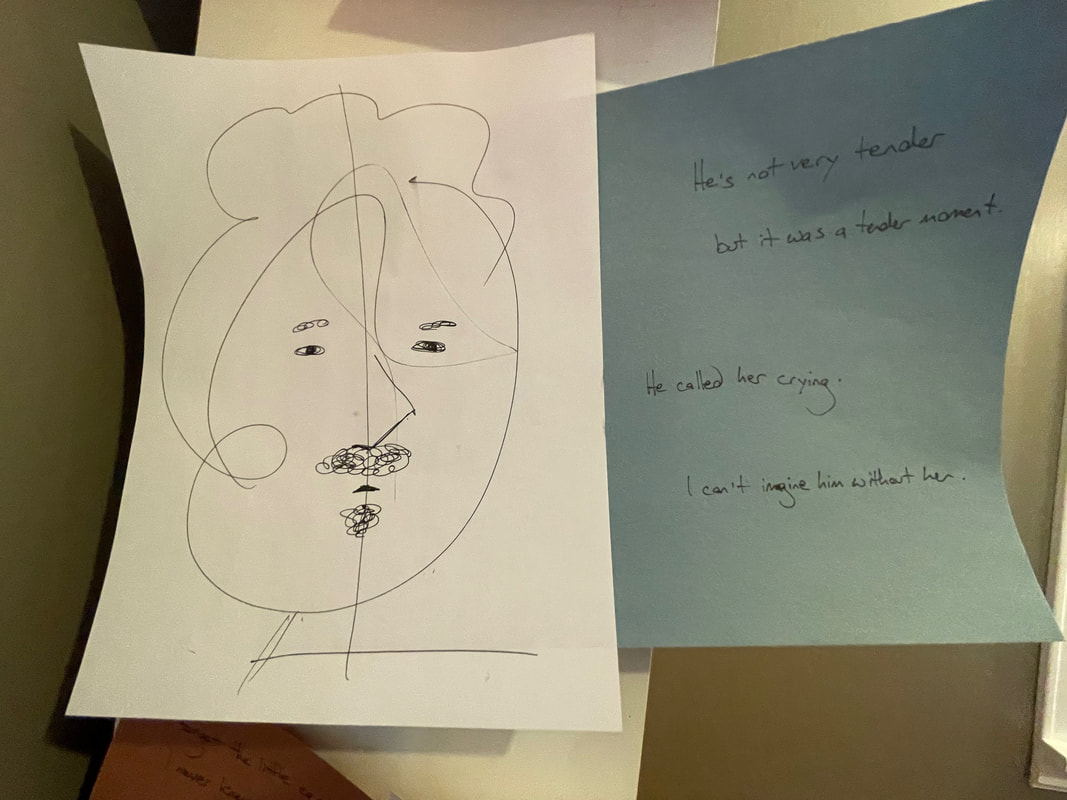
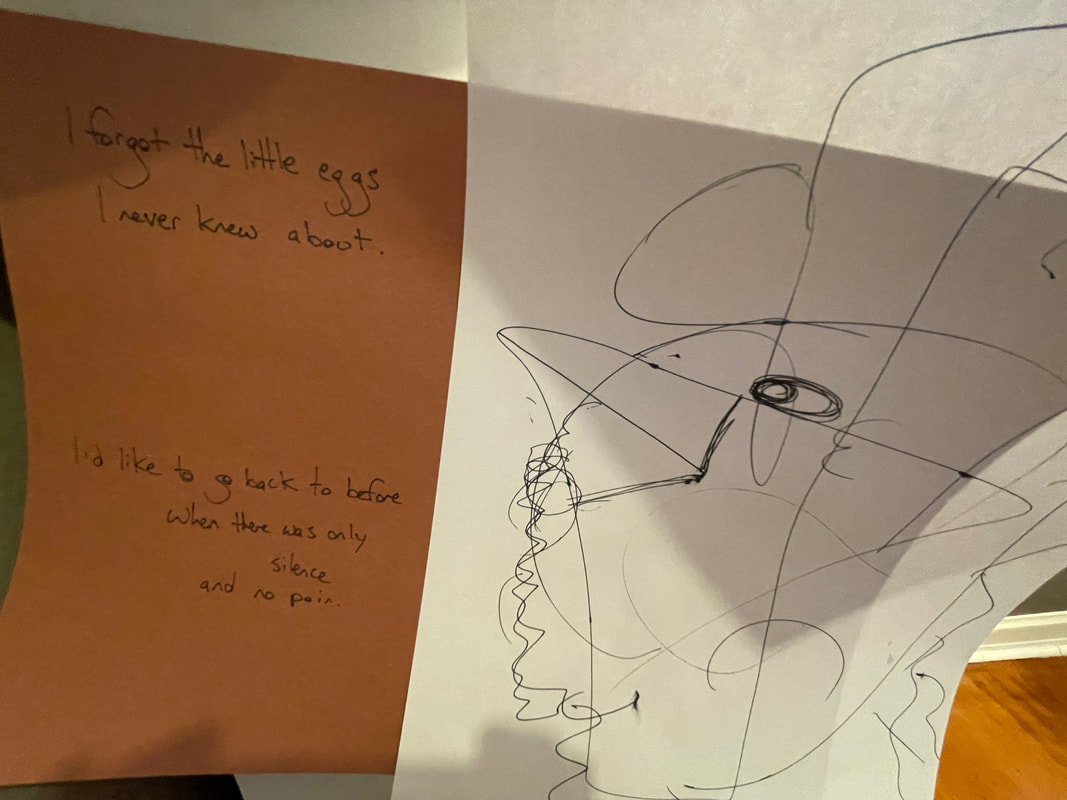
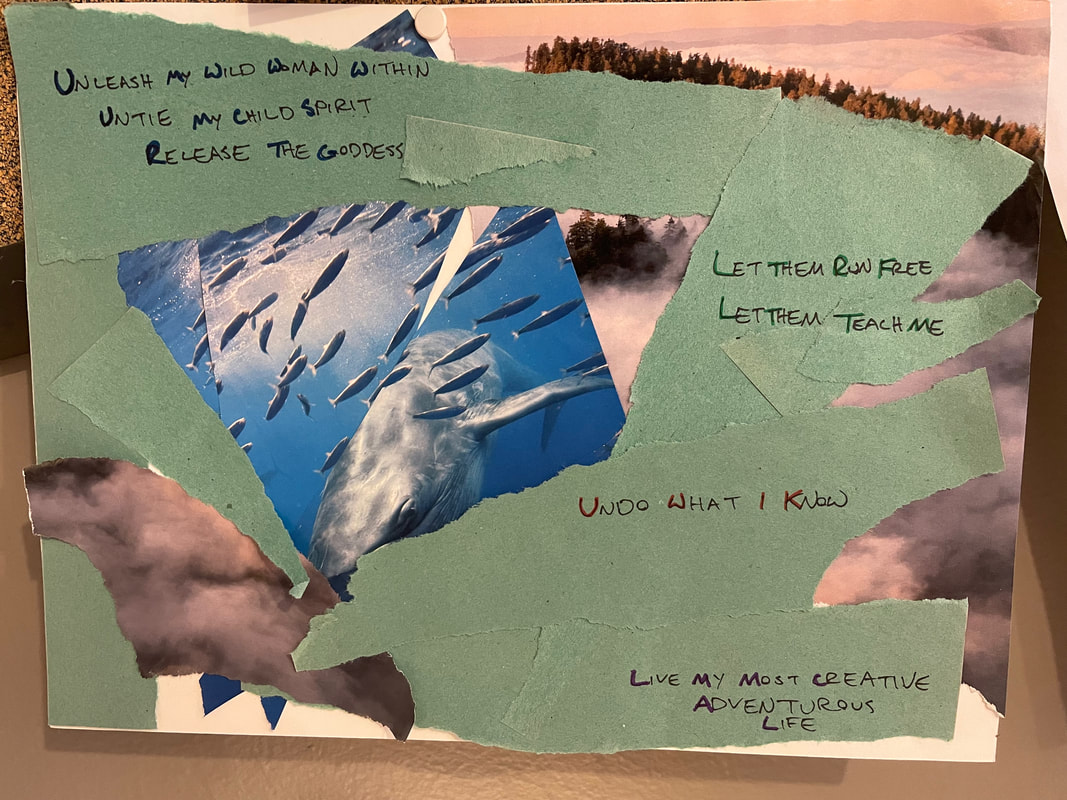
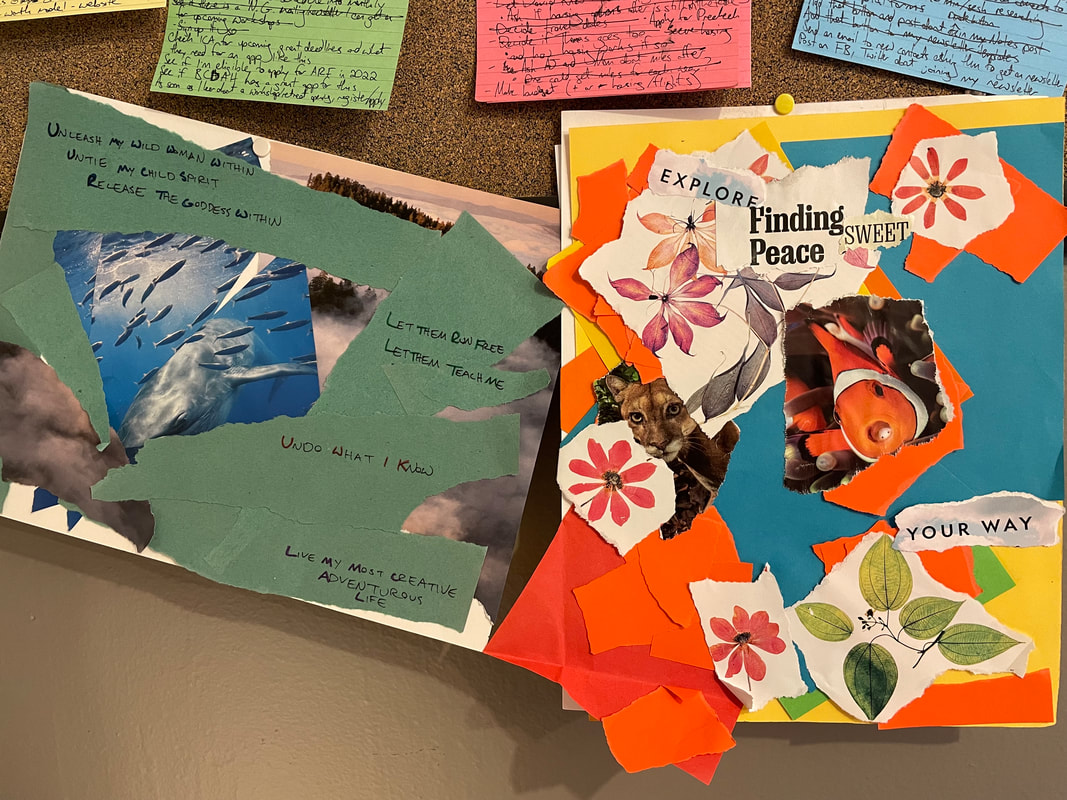
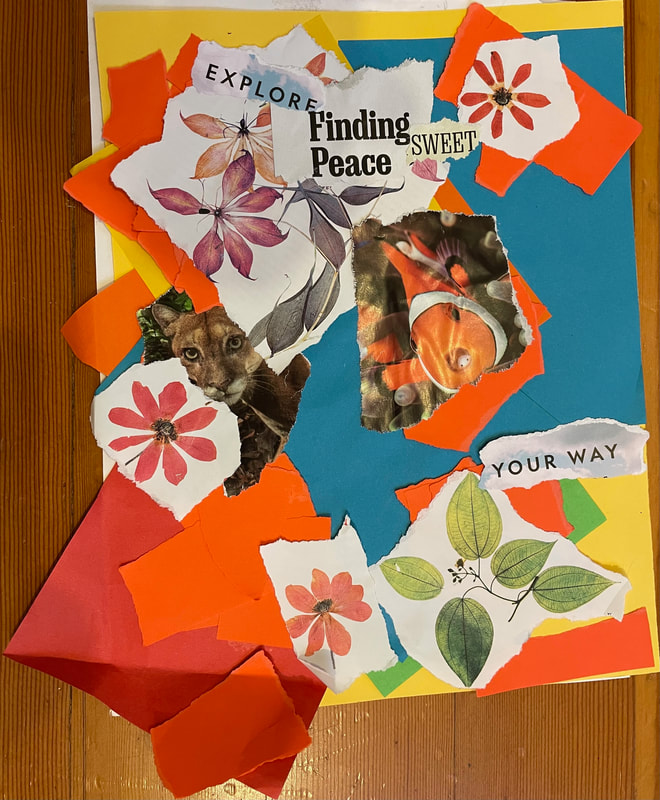
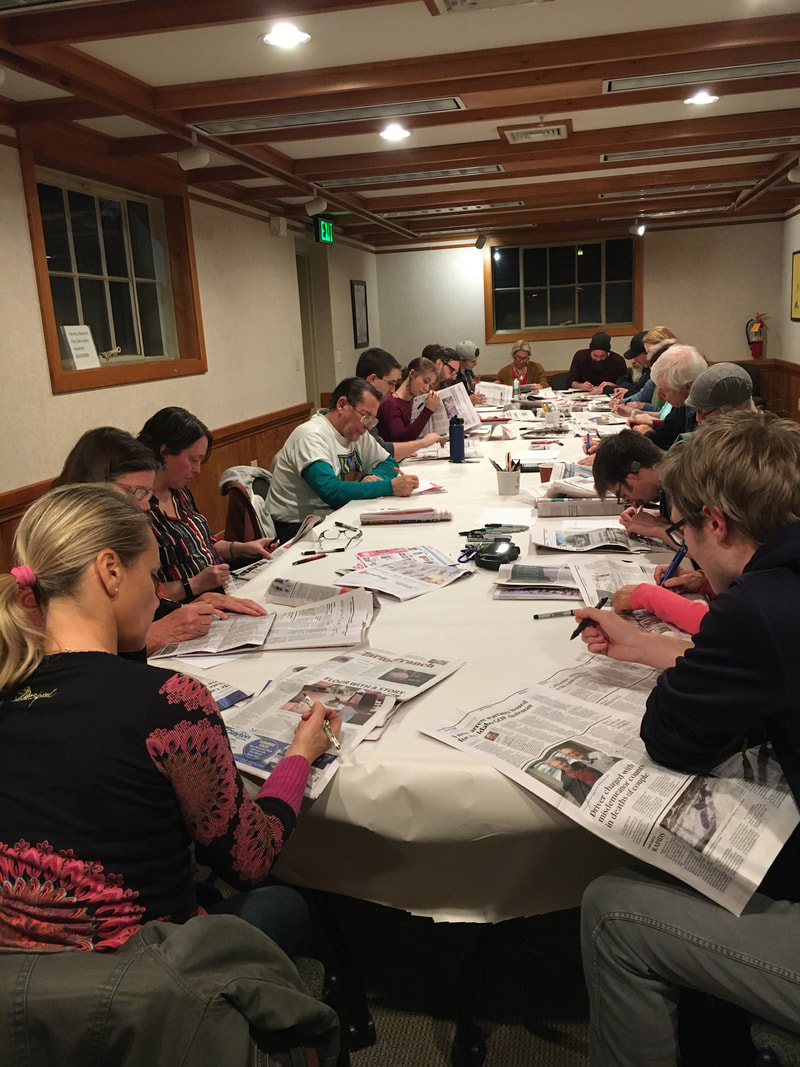
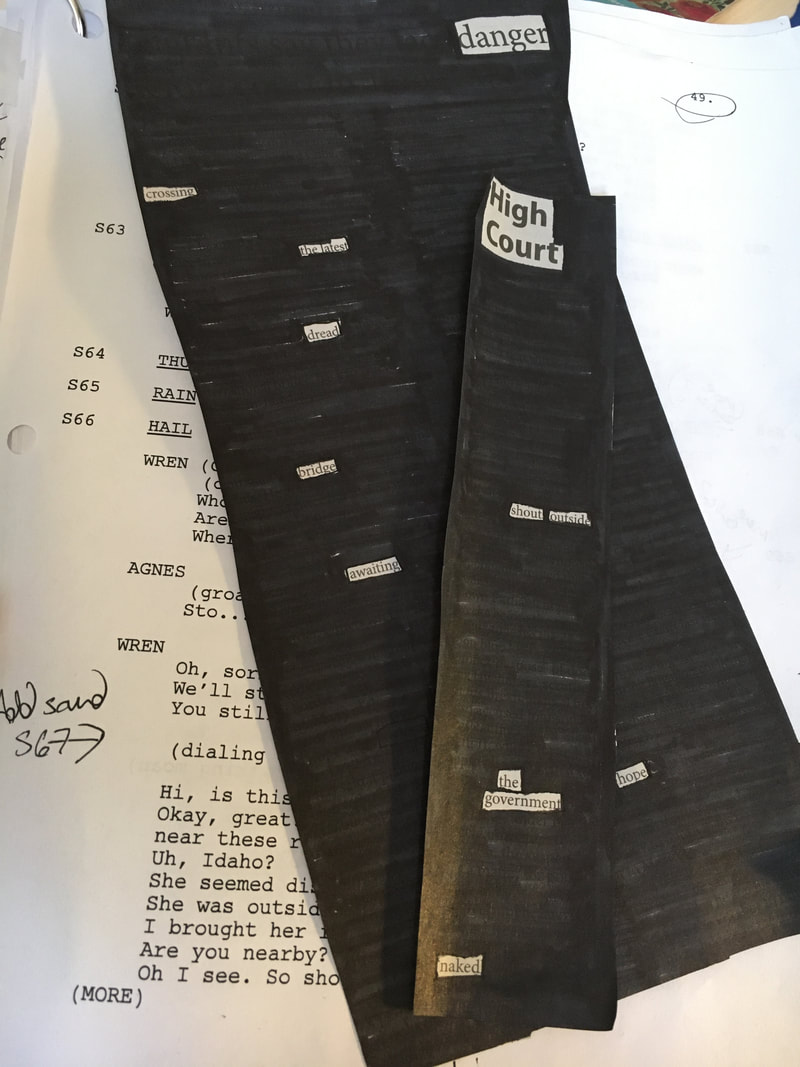
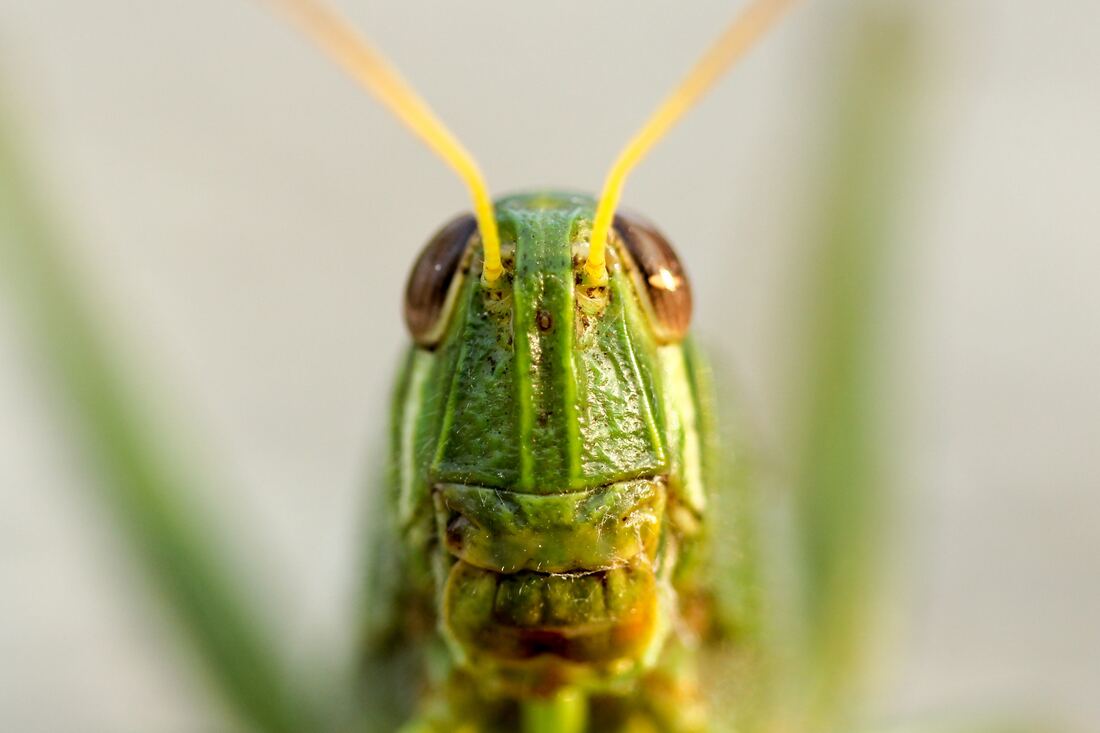
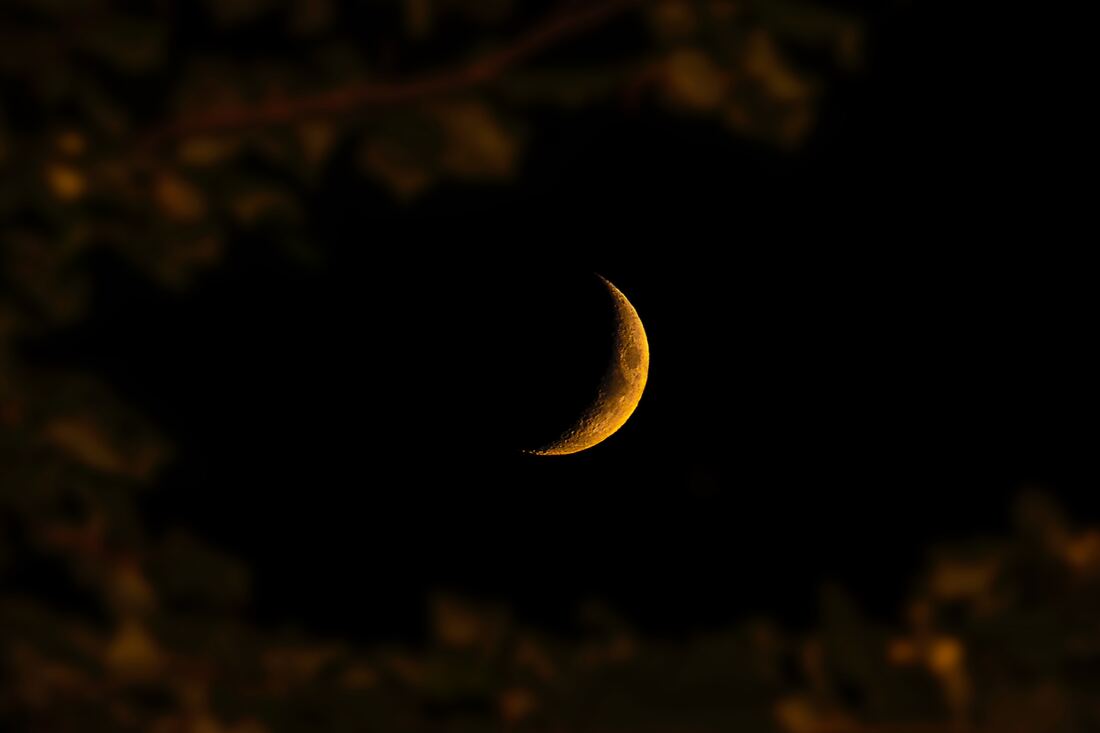
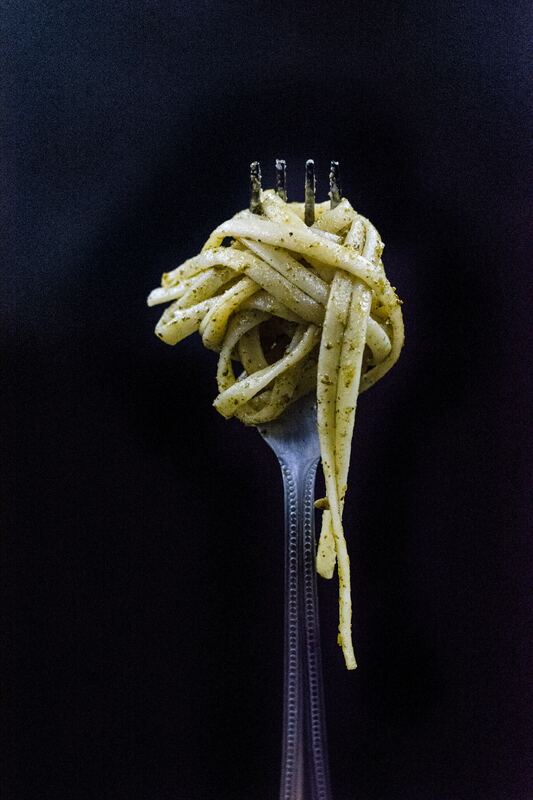

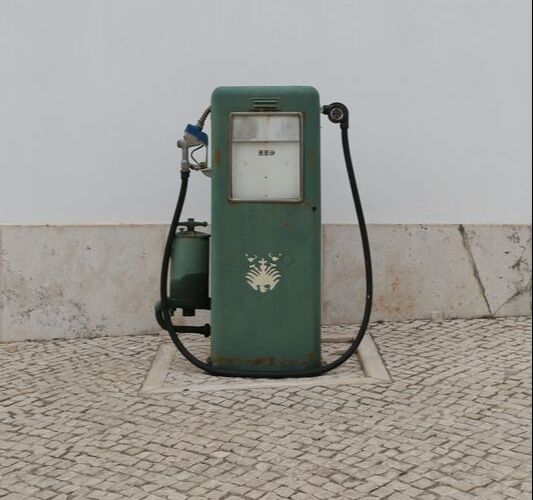
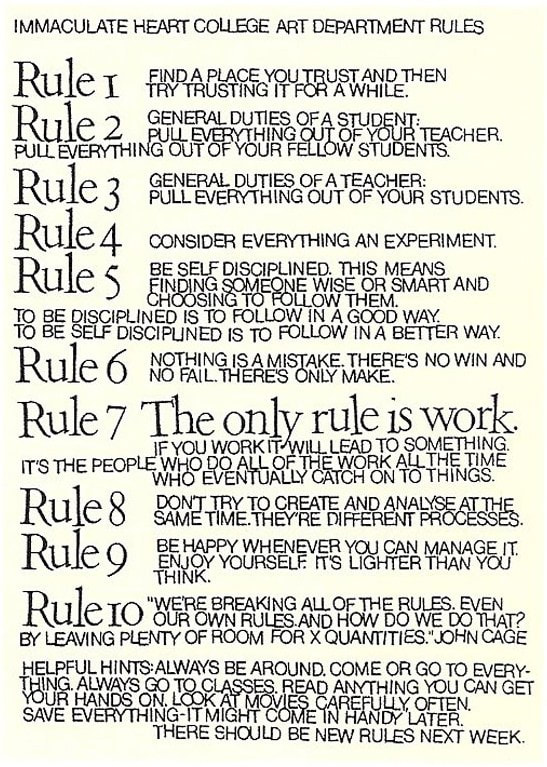
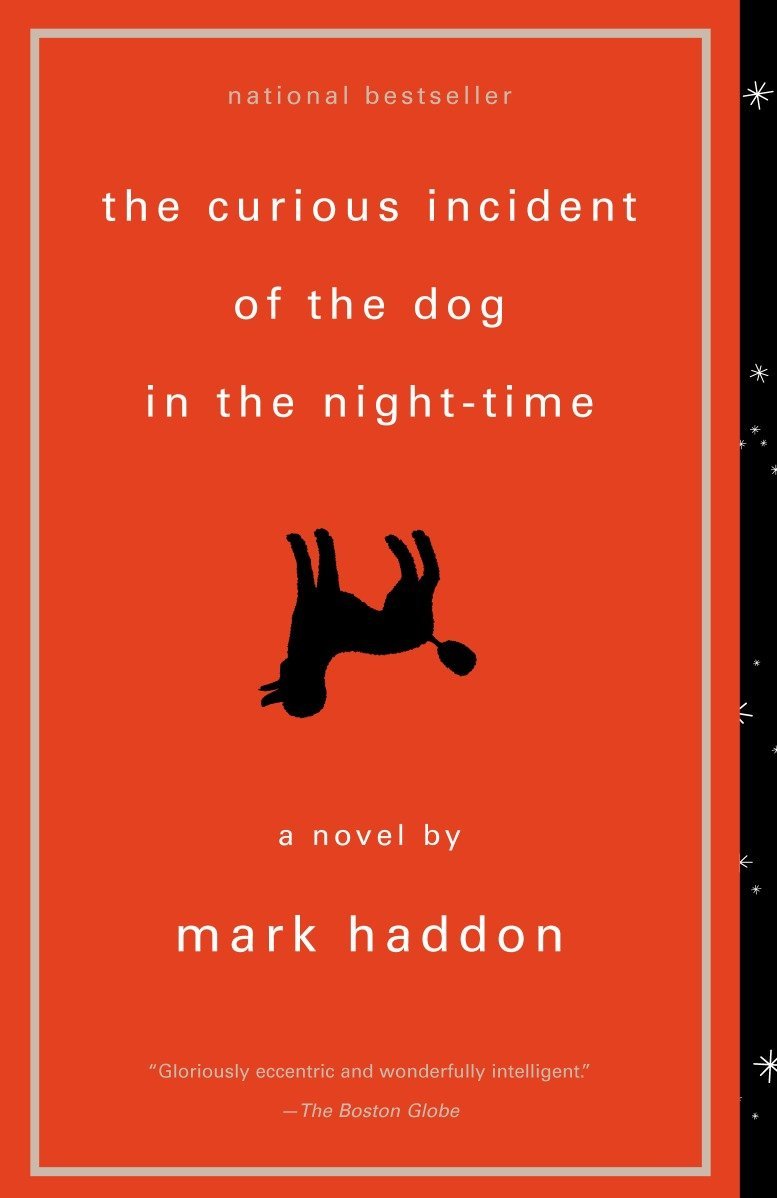
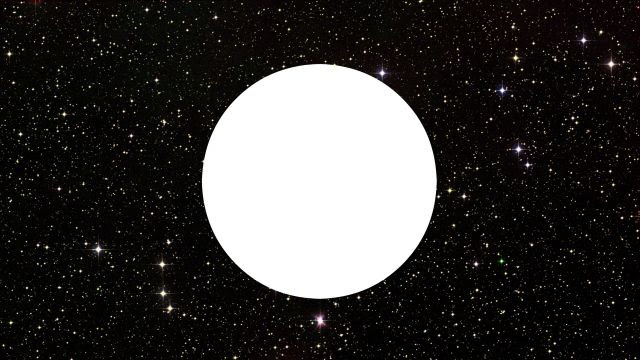
 RSS Feed
RSS Feed